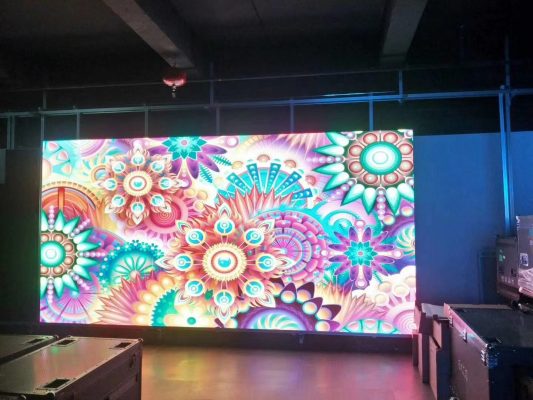indoor and outside LED display walls is a flat video panel display, consisting of small LED module panels, used to display led text, images, led video, video signals and other information equipment.
LED, light emitting diode (abbreviation of light emitting diode). It is a diode made of compounds of gallium (Ga) and arsenic (As), phosphorus (P), nitrogen (N), and indium (In) by controlling the display mode of semiconductor light-emitting diodes, when electrons and holes Visible light can be radiated when combined, so it can be used to make light-emitting diodes. Used as indicator light in circuit and instrument, or composed of text or number display. Gallium phosphide arsenide diodes emit red light, gallium phosphide diodes emit green light, silicon carbide diodes emit yellow light, and indium gallium nitride diodes emit blue light. The luminous color and luminous efficiency of the LED are related to the materials and processes used to make the LED. The light bulb is all blue at the beginning, and phosphor is added at the back. According to the different needs of users, different light colors are adjusted. Red is widely used , Green, blue and yellow. Because the LED operating voltage is low (only 1.2 ~ 4.0V), it can actively emit light and have a certain brightness, and the brightness can be adjusted by voltage (or current). It is also resistant to shock, vibration, and has a long life (100,000 hours). Among the large-scale display devices, there is no other display method that matches the LED display method.

The display screen made by putting red and green LED chips or lamps together as a pixel is called a three-color or dual-primary color screen, and putting the red, green, and blue LED chips or lamps together as a pixel display The screen is called three primary color screen or full color screen. If there is only one color, it is called a monochrome or single primary color screen. The pixel size of indoor LED screens is generally 1.5-12 mm. It is often used to package several LED dies that can produce different primary colors into one, and the pixels of outdoor LED screens. The size is mostly 6-41.5 mm, each pixel is composed of a number of various monochromatic LEDs, the common finished product is called a pixel tube, a two-color pixel tube is generally composed of 2 red and 1 green, and a three-color pixel tube uses 1 red 1 Green 1 blue composition.
Regardless of whether a single-color, two-color or three-color screen is made with LEDs, the brightness of each LED that constitutes a pixel needs to be adjustable to display the image. The fineness of adjustment is the gray scale of the display screen. The higher the gray level, the more delicate the displayed image, the richer the color, and the more complicated the corresponding display control system. Generally, the 256-level gray-scale image has a very soft color transition, while the 16-level gray-scale color image has a very obvious color transition boundary. Therefore, color LED screens are currently required to be 256-level to 4096-level grayscale.
The LED luminescent materials used in the display have the following forms:
① LED light-emitting lamp (or single lamp) is generally composed of a single LED chip, reflector cup, metal anode, metal cathode, and an epoxy resin shell with light-transmitting and light-gathering ability is encased. One or more (different colors) single lights can be used to form a basic pixel. Due to the high brightness, it is mostly used for outdoor display screens.
② LED dot matrix module It consists of several chips to form a light-emitting matrix, which is encapsulated in a plastic case with epoxy resin. Suitable for row and column scan drive, it is easy to form a high-density display, which is mostly used for indoor display.
③ SMD LED luminaire (or SMD LED) is a package of LED luminaire in the form of soldering, which can be used for indoor full-color display, can achieve single-point maintenance, and effectively overcome the mosaic phenomenon